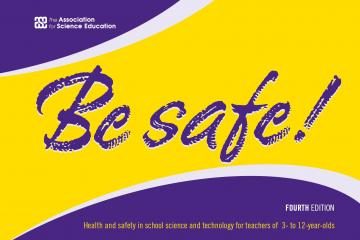
Best Practice for Heads of Science and Headteachers |
Encouraging good practical science |
| ASE Best Practice Guidance guidance on Outdoor Learning, Assessment and Senior Leadership. This series of best practice documents brings together important advice on key aspects of the teaching and learning of science... | Topics in Safety How to stay safe in the prep room and classroom. This resource offers a detailed look at a wide range of topics covering everything from working with DNA to the use of chemicals in the classroom... |
| Managing health and safety in science departments Ideas about policies, training and monitoring | We don’t do that - it’s not safe anymore (SSR 332) Investigates how over-cautiousness can inhibit good science teaching. |
| ASE Science Leaders' Survival Guide How to ensure that practical science flourishes in the department by appropriate use of risk assessments | Oh yes you can! (EiS 224) This article debunks myths around supposed bans of school science experiments. |
| Health and Safety Guidance for Governors and Head Teachers (Welsh translation) | Yes you can! Workshop (2017) These notes from ASE Annual Conference encourage practical science by helping teachers and technicians identify safe ways of working, and also to help develop new, exciting, and safe practical activities. |
| How Safe is your Science Department? A manager's checklist | Saftey Matters A collection of articles from the Health and Safety Specialist group. |
Further guidance
his guidance reprints various health and safety articles which have appeared over the years in ASE journals. Some date back a number of years but they are all checked to ensure that they still offer advice which is valid and useful. Most will show the date on which they were checked and in some cases there is a footnote to indicate any significant changes since the original article was written.
|
General |
Biology |
Chemistry |
Physics |
|
|
|||
|
|
|
||
|
|
|
||
|
|
|
||
|
|
|
||
|
|
|
||
|
|
|
|
|
|
|
|
|
|
|
|
|
|
|
|
|
|
|
|
|
|
|
|
|
|
|
|
|
|
|
|
|
|



